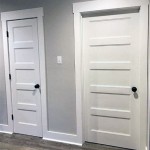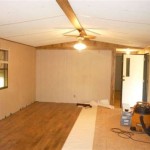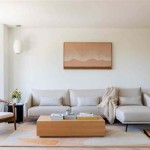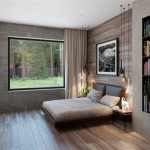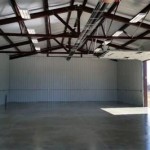Human Dimension and Interior Space: A Powerful Relationship
The human dimension in interior space is a multifaceted and crucial aspect of design and architecture. It goes beyond mere aesthetics, delving into the intricate interplay between the built environment and human experience. This relationship is fundamental to creating spaces that are not only visually appealing but also functional, comfortable, and conducive to the well-being of the occupants. Understanding the human dimension in interior space involves examining how individuals interact with their surroundings, considering their physical, psychological, and social needs.
Human Dimensions in Interior Design: A Multifaceted Approach
The study of human dimensions in interior design is a comprehensive field that incorporates various disciplines, including ergonomics, anthropometry, psychology, and sociology. By integrating these perspectives, designers can create spaces that cater to the diverse needs and preferences of individuals. The human dimension encompasses:
-
Anthropometry:
This involves measuring the human body, including its dimensions, proportions, and movements. This data is crucial for designing furniture, doorways, staircases, and other built elements that accommodate the human form comfortably. -
Ergonomics:
Ergonomics focuses on optimizing workplaces and products to improve human well-being and performance. In interior space, this includes designing furniture that supports proper posture, reducing strain on the body, and enhancing work efficiency. -
Psychology:
Interior design has a significant impact on human behavior and emotions. Color, light, texture, and spatial arrangements can evoke specific feelings and influence our mood and well-being. Understanding these psychological effects is essential for creating spaces that promote relaxation, creativity, or focus. -
Sociology:
Social interactions and cultural values influence the design and use of interior space. Designers must consider how the space facilitates or hinders social interactions, accommodates diverse cultural practices, and promotes a sense of community.
By considering these human dimensions, designers can create spaces that are not only aesthetically pleasing but also functional, comfortable, and enriching for the occupants. Spaces designed with an understanding of human needs are more likely to be used effectively, promote well-being, and enhance the overall quality of life of its users.
Creating User-Centric Spaces: The Role of Human Dimensions
The human dimension acts as a guiding principle in creating user-centric spaces. It involves considering the specific needs and preferences of the intended occupants and translating these insights into design decisions. This approach ensures that the space is not only functionally appropriate but also aesthetically pleasing and stimulating for its users. Key considerations include:
-
Accessibility:
Designing for accessibility ensures that spaces are inclusive and usable by individuals with disabilities. This includes providing wheelchair-accessible entrances and restrooms, as well as implementing universal design principles that minimize barriers for all users. -
Functionality:
The space should be designed to support its intended use. This involves considering the activities that will take place within it, the required equipment and furniture, and the flow of people and objects. -
Comfort:
Comfort is paramount in interior design. This includes considerations such as temperature control, adequate lighting, sound insulation, and the comfort of seating and other furniture. -
Aesthetics:
The aesthetic appeal of a space can significantly influence the user experience. This includes factors such as color schemes, textures, lighting, and the overall visual harmony of the space. The use of natural materials and sustainable design principles can enhance both the aesthetic and ecological aspects of a space. -
Safety:
Designing for safety ensures that the space is free from hazards and promotes the well-being of its occupants. This includes considering fire safety, emergency exits, and the prevention of slip, trip, and fall hazards.
By prioritizing these aspects, designers can create spaces that are not only visually appealing but also functional, comfortable, and safe for all users. Spaces designed with an awareness of the human dimension are more likely to promote productivity, well-being, and a sense of belonging.
The Impact of Human Dimensions on Interior Space
The integration of human dimensions into interior space design has a profound impact on the overall user experience. Spaces designed with a user-centric approach are more likely to be:
-
Functional and Efficient:
Spaces designed with an understanding of human movements and needs are more efficient and facilitate smooth workflow, whether in a workplace, a healthcare setting, or a residential space. -
Comfortable and Inviting:
The use of appropriate materials, colors, and lighting creates a welcoming and comfortable atmosphere, promoting relaxation, productivity, and a sense of well-being. -
Accessible and Inclusive:
Designing for accessibility ensures that the space is usable by individuals with a wide range of needs and abilities, promoting inclusivity and social equity. -
Safe and Secure:
Spaces designed with safety in mind provide a sense of security and minimize risks for users, fostering confidence and peace of mind. -
Aesthetically Pleasing and Stimulating:
The use of design elements that appeal to human senses and evoke positive emotions can enrich the user experience and create a more stimulating and enjoyable environment.
In conclusion, understanding and integrating the human dimension into interior space design is a crucial aspect of creating spaces that are not only functional but also enriching and conducive to human well-being. By considering the physical, psychological, and social needs of users, designers can craft environments that enhance productivity, well-being, and the quality of life for all.

10 Dimensions Ideas Universal Design Human Dimension Rules

Human Dimension Interior Space

Ppt Design And Function Of Interior Space Powerpoint Presentation Free Id 1546910

Human Scale Interior Design Tips Ergonomics

Ppt Human Dimensions Of Urban Ecology Powerpoint Presentation Free Id 4698176

Space Planning The Interior Design Student

Ppt Sensory Interior Design Elevating Living Spaces To Holistic Havens Powerpoint Presentation Id 12842375

Anthropometry In Architecture Design Urban Lab

Ppt Anthropometry Powerpoint Presentation Free Id 412133

What Interior Designers Need To Know About Ergonomics Anthropometry In Design
Related Posts

